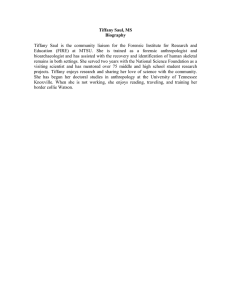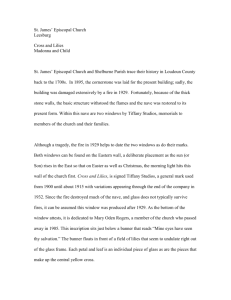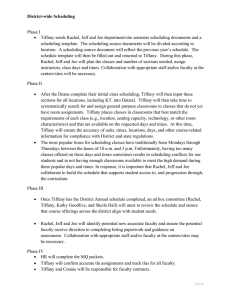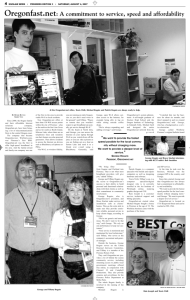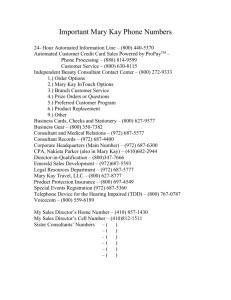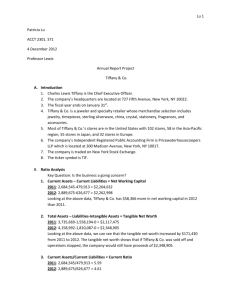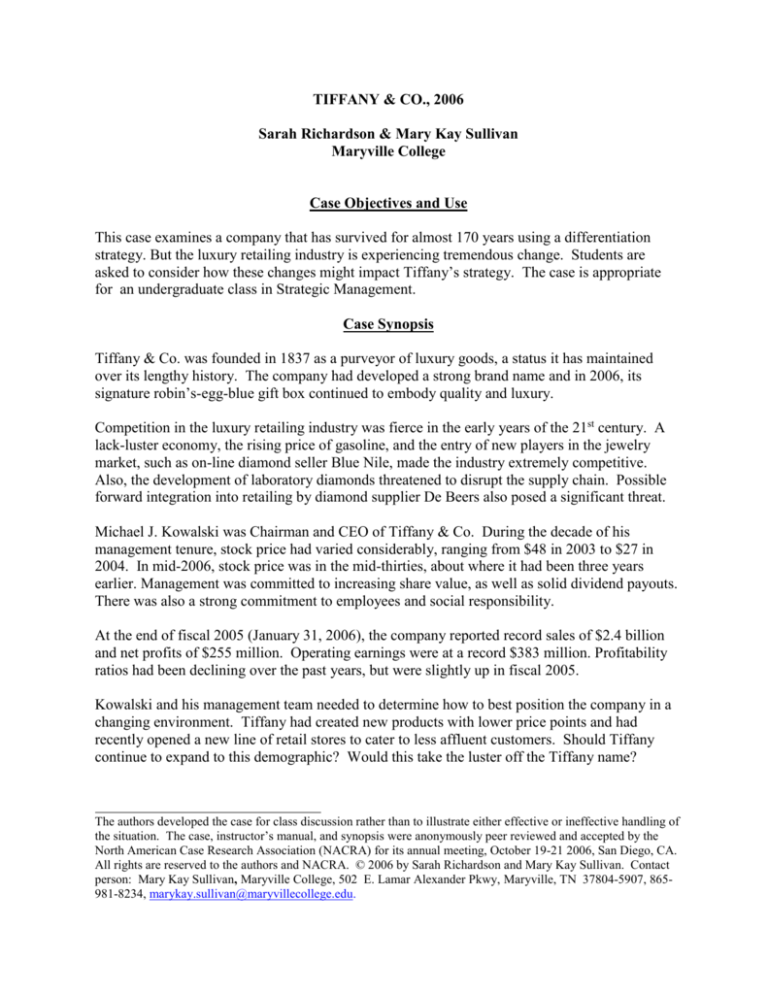
TIFFANY & CO., 2006
Sarah Richardson & Mary Kay Sullivan
Maryville College
Case Objectives and Use
This case examines a company that has survived for almost 170 years using a differentiation
strategy. But the luxury retailing industry is experiencing tremendous change. Students are
asked to consider how these changes might impact Tiffany’s strategy. The case is appropriate
for an undergraduate class in Strategic Management.
Case Synopsis
Tiffany & Co. was founded in 1837 as a purveyor of luxury goods, a status it has maintained
over its lengthy history. The company had developed a strong brand name and in 2006, its
signature robin’s-egg-blue gift box continued to embody quality and luxury.
Competition in the luxury retailing industry was fierce in the early years of the 21st century. A
lack-luster economy, the rising price of gasoline, and the entry of new players in the jewelry
market, such as on-line diamond seller Blue Nile, made the industry extremely competitive.
Also, the development of laboratory diamonds threatened to disrupt the supply chain. Possible
forward integration into retailing by diamond supplier De Beers also posed a significant threat.
Michael J. Kowalski was Chairman and CEO of Tiffany & Co. During the decade of his
management tenure, stock price had varied considerably, ranging from $48 in 2003 to $27 in
2004. In mid-2006, stock price was in the mid-thirties, about where it had been three years
earlier. Management was committed to increasing share value, as well as solid dividend payouts.
There was also a strong commitment to employees and social responsibility.
At the end of fiscal 2005 (January 31, 2006), the company reported record sales of $2.4 billion
and net profits of $255 million. Operating earnings were at a record $383 million. Profitability
ratios had been declining over the past years, but were slightly up in fiscal 2005.
Kowalski and his management team needed to determine how to best position the company in a
changing environment. Tiffany had created new products with lower price points and had
recently opened a new line of retail stores to cater to less affluent customers. Should Tiffany
continue to expand to this demographic? Would this take the luster off the Tiffany name?
The authors developed the case for class discussion rather than to illustrate either effective or ineffective handling of
the situation. The case, instructor’s manual, and synopsis were anonymously peer reviewed and accepted by the
North American Case Research Association (NACRA) for its annual meeting, October 19-21 2006, San Diego, CA.
All rights are reserved to the authors and NACRA. © 2006 by Sarah Richardson and Mary Kay Sullivan. Contact
person: Mary Kay Sullivan, Maryville College, 502 E. Lamar Alexander Pkwy, Maryville, TN 37804-5907, 865981-8234, marykay.sullivan@maryvillecollege.edu.

